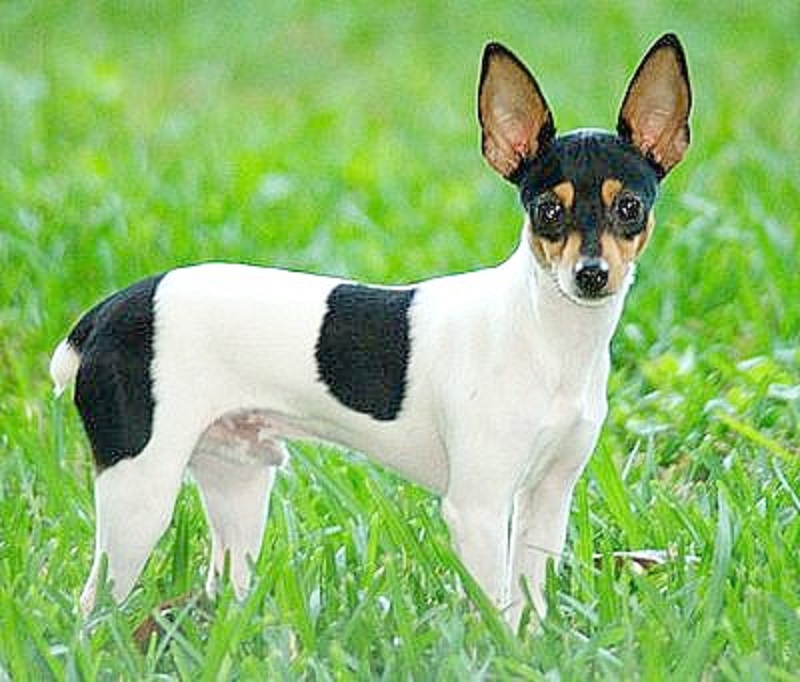
Toy Fox Terrier

Navigate through the tabs
Navigate through the tabs below to view the breed's info of your interest.
The breed's info is divided in four sections; namely:
the breed's history ,
the breed's main stats ,
the dog's potential health issues
and finally, how the breed scored in 26 different categories.
All the above information should give you a respectively good overview for the dog of your interest.
Dog Breed's Main Info
The Breed's History:
Terrier breeds have been documented in England as far back as the 1500s. One of those breeds was the Smooth Fox Terrier, developed to rout foxes from their dens during the hunt.
The Smooth Fox Terrier had always been widely divergent in size, with some dogs weighing about 20 pounds while others were as small as 7 pounds. These runts were often more prized than the larger dogs as they seemed to be feistier and more willing to jump into the fray whether it be ratting, hunting other game or defending the homestead.
The United Kennel Club began to register Smooth Fox Terriers in 1912. The smaller dogs were registered along with the larger ones as Smooth Fox Terriers. In the mid- 1920s, fanciers of the smaller dogs petitioned the UKC to make the smaller dogs a separate breed, which was finally accomplished in 1936. The breed was registered as the Toy Fox Terrier. The TFT was granted American Kennel Club recognition in 2003.
For many years there was a debate among breeders regarding size, some wanted a larger dog; others wanted the dog to remain a toy. Some fanciers introduced Toy Manchester and Chihuahua blood into the breed to help fix the size.
This move upset other breeders who did not want the contamination of other breeds in the gene pool. The UKC agreed that the dog should remain a toy and that other breeds should not be introduced into the gene pool. The Toy Fox Terrier stud book was closed by the UKC on August 31, 1960 so no more crossing of breeds could be done.
Country of Origin:
United States
Breed Group:
Companion
Height:
8 inches to 11 inches (20,32 to 27,94 cm)
Weight:
3 pounds to 7 pounds (1,36 to 3,18 Kg)
Life Span:
13 to 14 years
Potential Health Issues:
Von Willebrand's Disease,
Demodectic Mange,
Patellar Luxation,
Legg-Calve-Perthes Disease,
Congenital Hypothyroidism with Goiter (CHG)
Adaptability
Apartment Living:
First Time Owners:
Sensitivity:
Being Alone:
Cold Weather:
Hot Weather:
Friendliness
Affection With Family:
With Kids:
With Dogs:
With Strangers:
Health and Grooming
Shedding:
Drooling:
Easy To Groom:
Overall Health:
Weight Gain Potential:
Size:
Training
Easiness:
Intelligence:
Mouthiness:
Prey Drive:
Barking or Howling:
Wanderlust:
Need For Exercise
Energy Level:
Intensity:
Exercise Needs:
Playfulness:
Our Mobile Application
Check out Our Mobile Application "Dog Breeds Central"
